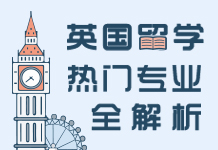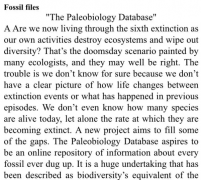青岛朗阁:2016年1月9日雅思阅读考试真题回顾及解析(B卷)
来源:青岛朗阁
浏览:
发布日期:2016-01-11 10:49
摘要:2016年1月9日的雅思阅读考试分为A卷和B卷,青岛朗阁小编第一时间为大家带来了2016年1月9日雅思阅读B卷的考试回顾及解析,希望对各位雅思考生有所帮助~
| Reading Passage 1-B | |
| Title: | The history of Telegraph |
| Question types: | 判断题6+ Short Answer 7 |
| 文章内容回顾 | 本文讲述了古代如何传送信息以及莫斯密码发明后对现代人的信息交流产生了怎样的影响。 |
| 参考答案 |
判断: 1. In the research of French scientists, the metal lines were used to send message TRUE 2. Abbots gave the monks an electrical shock at the same time, which constitutes the exploration on the long-distance signaling TRUE 3. Using Morse Code to send message need to simplify the message firstly FALSE 4. Morse was a famous inventor before he invented the code TRUE 5. The water is significant to early telegraph repeater on continent TRUE 6. US Government offered fund to the 1st overland line across the continent NOT GIVEN Short Answer: 7. Why is the disadvantage for the Charles Wheatstone's telegraph system to fail in the beginning? expensive 8. What material was used for insulating cable across the sea? latex 9. What was used by British pioneers to increase the weight of the cable in the sea? Lead ripe 10. What did Fisherman mistakenly take the cable as? Unusual seaseed 11. Who was the message firstly sent to across the Atlantic by the Queen? President Buchanan 12. What giant animals were used to carry the cable through desert? camels 13. What weather condition did it delay the construction in north Australia? Tropical rain 14. How long did it take to send a telegraph message from Australia to England? Several hours |
| 题型难度分析 | 本篇阅读题型为判断题和短问题回答题,都是细节题目顺序做题,难度偏低。 |
| 题型技巧分析 |
判断题作为雅思阅读的主流题型,一直是让考生较为困惑的一种题型,这种困惑往往来自于中西方文化在思维模式上的差异。西方文化较为侧重证据性,追求思维上的细节对应,因此考生在做题中应逐渐适应这种逻辑方式。可参考以下判断原则: True: 1. 同义改写 2. 归纳总结 False: 1. 直接相反 2. 原文是多个项目并列但题目是“必须”或者“只有”3. 缺少条件成分 Not given: 1. 内容在原文中无提及 2. 题目范围小于原文范围 3. 比较关系不成立 *判断题应特别注意书写答案的规范性:注意看是YES/NO/NOT GIVEN 还是TRUE/FALSE/NOT GIVEN, 书写时要大写全拼。 |
| 相似英文原文阅读 |
A The idea of electrical communication seems to have begun as long ago as 1746, when about 200 monks at monastery in Paris arranged themselves in a line over a mile long, each holding ends of 25 ft iron wires. The abbot, also a scientist, discharged a primitive electrical battery into the wire, giving all the monks a simultaneous electrical shock. "This all sounds very silly, but is in fact extremely important because, firstly, they all said 'ow' which showed that you were sending a signal right along the line; and, secondly, they all said 'ow' at the same time, and that meant that you were sending the signal very quickly, "explains Tom Standage, author of the Victorian Internet and technology editor at the Economist. Given a more humane detection system, this could be a way of signaling over long distances. B With wars in Europe and colonies beyond, such a signalling system was urgently needed. All sorts of electrical possibilities were proposed, some of them quite ridiculous. Two Englishmen, William Cooke and Charles Wheatstone came up with a system in which dials were made to point at different letters, but that involved five wires and would have been expensive to construct. C Much simpler was that of an American, Samuel Morse, whose system only required a single wire to send a code of dots and dashes. At first, it was imagined that only a few highly skilled encoders would be able to use it but it soon became clear that many people could become proficient in Morse code. A system of lines strung on telegraph poles began to spread in Europe and America. D The next problem was to cross the sea. Britain, as an island with an empire, led the way. Any such cable had to be insulated and the first breakthrough came with the discovery that a rubber-like latex from a tropical tree on the Malay peninsula could do the trick. It was called gutta percha. The first attempt at a cross channel cable came in 1850. With thin wire and thick installation, it floated and had to be weighed down with lead pipe. E It never worked well as the effect of water on its electrical properties was not understood, and it is reputed that a French fishermen hooked out a section and took it home as a strange new form of seaweed The cable was too big for a single boat so two had to start in the middle of the Atlantic, join their cables and sail in opposite directions. Amazingly, they succeeded in 1858, and this enabled Queen Victoria to send a telegraph message to President Buchanan. However, the 98-word message took more than 19 hours to send and a misguided attempt to increase the speed by increasing the voltage resulted in failure of the line a week later. F By 1870, a submarine cable was heading towards Australia. It seemed likely that it would come ashore at the northern port of Darwin from where it might connect around the coast to Queensland and New South Wales. It was an undertaking more ambitious than spanning an ocean. Flocks of sheep had to be driven with the 400 workers to provide food. They needed horses and bullock carts and, for the parched interior, camels. In the north, tropical rains left the teams flooded. In the centre, it seemed that they would die of thirst. One critical section in the red heart of Australia involved finding a route through the McDonnell mountain range and then finding water on the other side. G The water was not only essential for the construction team. There had to be telegraph repeater stations every few hundred miles to boost the signal and the staff obviously had to have a supply of water, lust as one mapping team was about to give up and resort to drinking brackish water, some aboriginals took pity on them. Altogether, 40, 000telegraph poles were used in the Australian overland wire. Some were cut from trees. Where there were no trees, or where termites ate the wood, steel poles were imported. H On Thursday, August 22, 1872, the overland line was completed and the first messages could be sent across the continent; and within a few months, Australia was at last in direct contact with England via the submarine cable, too. The line remained in service to bring news of the Japanese attack on Darwin in 1942. it could cost several pounds to send a message and it might take several hours for it to reach its destination on the other side of the globe, but the world would never be same again. Governments could be in touch with their colonies. Traders could send cargoes based on demand and the latest prices. Newspapers could publish news that had just happened and was not many months old. |
| 剑桥雅思推荐原文练习 | C8T1P1 |
| Reading Passage 2-B | |
| Title: | Human brain development |
| Question types: | 选择4+Summary带选项5+判断5 |
| 文章内容回顾 | 本文讲儿童智力和语言的研究(对语言的分辨):关于人的大脑关于人从出生到成年对声音和视觉的发展的研究,指出孩子受环境影响学习到一些技能但成人不容易学习。其中引用日本人的情况说明婴儿在8-10个月能分辨几乎所有的发音,但之后会消失。 |
| 参考答案 |
选择题1-4: 1. 以下四个婴儿的事情哪一个没被提到: Social skills 2. What the animal experiment is to illustrate? Different lines and angles affect sight 3. The second experiment on…is prove that Human’s development is similar to animals in this area 4. which children appear mindless? Cortex still does not work 5-9 Summary 选词填空 5. 实验用的H speech sound 语言是日语 研究人员是两个日本人6. Japanese 7. 第二个选说做实验给小孩听noise他们心跳变很快,heart rate作为indicator 8. 第三个实验和visual observation有关,仔细观察physical eye movements 9. 第四个实验,因为选的地域广,结论充分,harness dialects, 科学家可以很好地控制他们的实验对象。 10. Japanese research on the adults produce conclusive outcome---YES 11. Some babies can identify all phonemes---YES 12. …have intended to find xxx 8 months to 12---NO 13. adults can hear phonemes but it takes longer time to proves the information要花很多时间去适应brain process---NOT GIVEN 14. children who grew up in bilingual families tend to become bilingual---NOT GIVEN |
| 题型难度分析 | 本篇阅读结合选择判断总结三种题型,难度适中。 |
| 题型技巧分析 |
选择题是雅思阅读中一种考生熟悉的传统题型,其中主要分为四选一和多选多两种类型。多选多实际上是一种较为简单的题型,因为正确答案数目是已知的(which three/four)而且答案在原文中是集中出现的。四选一在考试中相对较难,因为四个选项的区分度较低,考生往往会出现看哪个选项都像的情况。 推荐解题步骤: 1.找出题干中的核心关键词,尽可能定位到原文中的一个段落。 2.从头到尾快速阅读选定段落,根据题干中的其他关键词以及选项确定正确答案,正确答案往往是对原文词句的改写。 3.对于难题可使用排除法。 注意顺序性:题目顺序和原文顺序基本一致。 |
| 剑桥雅思推荐原文练习 |
C6T4P2 C7T1P3 |
| Reading Passage 3-B | |
| Title: | Born to trade |
| Question types: | Multiple Choice 5+Matching 3+判断6 |
| 文章内容回顾 | 本文讲述贸易的发展史、贸易的人的天性以及各地贸易发展水平和状况。早期人类使用珠宝显示身份和地位,而现代珠宝则多用作装饰品和考古研究。 |
| 剑桥雅思推荐原文练习 | C7T2P3 |
| 考试趋势分析和备考指导: |
|
2016首场考试延续了2015的风格,再次出现了AB卷,甚至澳新地区还出现了C卷。从题型上讲,考试在保持了一定数量传统题型的基础上,出现了难度较大的段落信息匹配题。推荐考生对此类题型多加练习并总结做题经验。Summary题型也多次出现,考生应注意仔细阅读题目要求,看清楚是对文章哪一部分的总结概括。本次考试出现的题型对考生的英语功底考察全面,对英语综合实力要求高,所以建议考生全方位地提高语言实力应考,从词汇和句法上把基本功打牢。 纵观2015所有雅思考试,2016的阅读考试难度有增大的趋势,建议大家在熟练掌握判断题(2015出题比例25.5%)和填空题(2015出题比例29.1%)的基础上,重点准备段落信息匹配题(配对题2015出题比例21.1%)。题材方面,考生除了关注常规的社科历史类文章话题外,应多加关注从2015比例逐渐上升的心理学类文章,进行相关话题词汇的积累,多进行泛读练习。词汇量和阅读量是决定阅读分数关键的两个因素,再配合对题型的熟悉和适当的技巧,才能在考试中无往而不胜。 |

扫二维码,添加朗阁咨询老师,备注“官网”
免费领取雅思、托福备考计划、精选资料,最新口语新题考点资料
25
2022-06
-
2020年1月16日雅思听力考试真题
2020年1月16日雅思考试已经结束,正在备考雅思的小伙伴,你们想要知道这次考试的听力部分都...
25
2022-06
-
2020年1月16日雅思阅读考试真题
正在进行雅思备考的小伙伴,你们想知道2020年1月16日雅思考试的考试内容吗?今天为了帮助大家...
25
2022-06
-
2020年1月16日雅思写作考试真题
今天为了帮助正在进行雅思备考的小伙伴更好的准备雅思考试,青岛朗阁雅思写作名师 费晓静...
25
2022-06
-
2020年1月16日雅思口语考试真题
今天青岛朗阁雅思口语名师张开翼为大家整理了2020年1月16日雅思口语考题总结,分析了雅思口...
04
2020-12
-
2020年11月14日朗阁雅思听力考题回顾
今天,要和大家分享的是2020年11月14日朗阁雅思听力考题回顾,希望这篇文章能够对大家的学习...
04
2020-12
-
2020年11月14日朗阁雅思阅读考题回顾
今天,要和大家分享的是2020年11月14日朗阁雅思阅读考题回顾,希望这篇文章能够对大家的学习...
热门课程
大家都在看
阅读(2095)
阅读(1965)
阅读(1942)
阅读(1323)
阅读(1093)
阅读(831)







